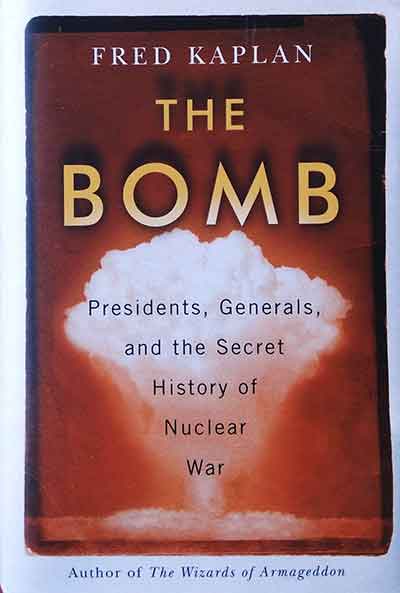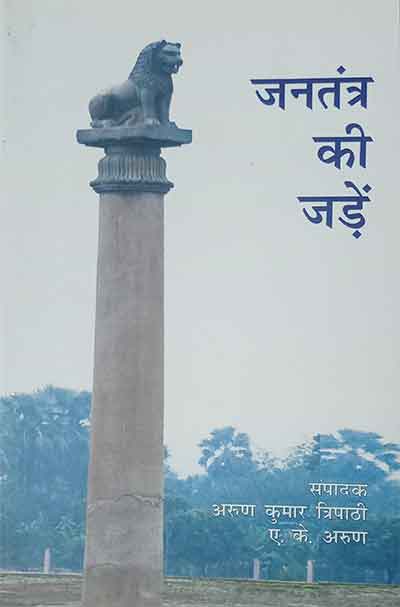
When a defense researcher and an aggressive reporter takes us into the White House Situation Room, the Joint Chiefs of Staff’s “Tank” in the Pentagon, and the gigantic chambers of Strategic Command to bring the myriad stories of how America’s presidents and generals have thought about, threatened, broached, and just about avoided nuclear war, it is bound to be an exceptional book.
Fred Kaplan is the national-security columnist for Slate and the author of five previous books, Dark Territory: The Secret History of Cyber War, The Insurgents: David Petraeus and the Plot to Change the American Way of War (a Pulitzer Prize finalist and New York Times bestseller), 1959, Daydream Believers, and The Wizards of Armageddon.
In the present book ‘The Bomb: Presidents, Generals, and the Secret History of Nuclear War’, Kaplan has come up with the story of the Bomb from the dawn of the atomic age until today. Based on exclusive interviews and previously classified documents, this is a historical research and can safely be categorized as deep reporting.
Dr. Kaplan has discussed at length theories that have dominated nightmare scenarios from Hiroshima and Nagasaki. Then he presents the unthinkable – in terms of mass destruction. He also demonstrates how the reality of a nuclear war will not go away, regardless of the calamitous consequences.
Examine these lines: ‘in public, over the years, officers and officials have described America’s nuclear policy as second-strike deterrence: if an enemy strikes us with nuclear weapons, we will retaliate in kind; this retaliatory power is what deters the enemy from attacking us.’
‘In reality, though, American policy has always been to strike first preemptively, or in response to a conventional invasion of allied territory, or to a biological or large-scale cyber attack: in any case, not just as an answer to a nuclear attack. All of these options envision firing nuclear weapons at military targets for military ends; they envision the bomb as a weapon of war, writ large.’
Furthermore, ‘this vision has been enshrined in the American military’s doctrines, drills, and exercises from the onset of the nuclear era through all its phases. Most presidents have been skeptical of this vision—morally, strategically, practically—but none of them have rejected it. Some have threatened to launch nuclear weapons first as a way of settling a crisis. The few who considered adopting a “no first use” policy, in the end, decided against it.’
The book is an impressive account of the various permutations of the official nuclear bomb policy of the United States. Organized into individual chapters devoted to every president – the sections take us to a coherent end.
With hindsight, if the end of the Cold War has given the incumbent president more control over the policy, Kaplan’s book says it all in splendid details: ‘For thirty years after the Cold War ended, almost no one thought, much less worried, about nuclear war. Now almost everyone is fearful. But the fear takes the form of a vaguely paralyzed anxiety. Because of the long reprieve from the bomb’s shadow, few people know how to grasp its dimensions; they’ve forgotten, if they ever knew.’
In the chapter on the present US President Kaplan is guileless: ‘The holiday from history ended on August 8, 2017, when President Donald Trump, barely six months in office, told reporters at his golf resort in Bedminster, New Jersey, that if the North Koreans kept threatening the United States with harsh rhetoric and missile tests, “they will be met with fire and fury like the world has never seen.”
Elsewhere he notes: ‘then, six months later, Trump signed and released his administration’s Nuclear Posture Review, a seventy-four-page document that called for building new types of nuclear weapons and integrating them with the military’s conventional war plans—in short, for treating nuclear weapons as normal. The red lights flashed the alarm bells rang furiously.’
Interestingly, there is a throwback to the times of President Truman and how both he and trump used similar rhetoric: ‘Even to those who didn’t remember President Harry Truman’s similar description, seventy-two years earlier, of the atomic bomb that destroyed Hiroshima (“a rain of ruin from the air, the like of which has never been seen on this earth”), it was clear that in language more bellicose than any president’s since the end of World War II, Trump was talking about launching nuclear weapons at North Korea.’
Kaplan writes rather pragmatically: ‘Understanding the nuclear era—the era of our lifetime—means understanding the rabbit hole: who dug it and how we got stuck inside. It means tracing the maze of its tunnels, which is to say, the arc of its history: a story enmeshed in secrecy, some of it still secret, much of it now illuminated—by declassified documents and interviews with key actors—though never fully told. How did we get to this second coming of nuclear panic?’
With reliable anecdotes and a wealth of historical detail, ‘The Bomb’ is like the ‘Pentagon Papers’ for the U.S. nuclear strategy. Kaplan has the ‘insider stories of an investigative journalist, the analytic rigor of a political scientist, and the longer-term perspective of a historian.’
The book is highly comprehensible and will surely make it to the permanent record of global nuclear politics. For war enthusiasts, this 375-page hardback is a must-read.
The Bomb
Fred Kaplan
Simon & Schuster, New York
2020
Bhaskar Parichha is a senior journalist and author based in Bhubaneswar
SIGN UP FOR COUNTERCURRENTS DAILY NEWSLETTER
















































